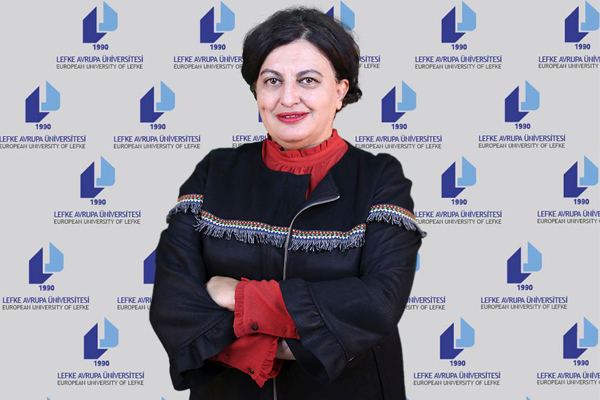EUL Department of First and Emergency Aid Lecturer Aslay provided information on “Heat Stroke”

European University of Lefke (EUL) Vocational School of Health Services, Department of First and Emergency Aid Lecturer Asst. Prof. Dr. Semra Aslay gave information about “Heat Stroke”.
“Heat stroke is a condition that occurs with an excessive increase in body temperature, sometimes progressing to confusion and causing dangerous consequences when not intervened. The human body can tolerate body temperature increase up to a certain point. However, after a certain point, since the increase in temperature will lead to simultaneous loss of fluid and ions, it is necessary to compensate for what is lost. Another point to be considered here is that sunstroke and heat stroke are confused with each other.” Aslay stated that sunstroke is a condition that occurs in those who stay under the sun for a long time, stand under the sun or work under the sun. Aslay added that heat stroke, on the other hand, occurs with the increase in body temperature and the inability to compensate for the destruction caused by this, regardless of exposure to the sun.
In the rest of her statement, she explained, “With the arrival of summer, the heat started to show its effect in Northern Cyprus as well as all over the world. The risk of heat stroke increases in environments that are closed or without proper ventilation. At the same time, there is a similar risk for those who stay under the sun.” Aslay continued as follows; The increase in temperature first causes an increase in pulse, blood pressure rises temporarily and then decreases. With the increase in sweating and body cycle, sugar and salt loss occurs in the person. The body perceives this as an impending danger and reduces urine output. Thus, heat stroke is tried to be controlled before it progresses. However, if the situation continues, physiologically the human body cannot tolerate it. Loss of sodium, sugar and water can lead to clinical conditions starting from weakness to unconsciousness.
“While intervening to the person suspected of heat stroke, we should not forget that there may be a history of trauma such as a fall-impact due to low blood pressure,” Aslay pointed out the information about the first aid to be given to the person as follows: If there is no history of trauma, the first thing we need to do is to move the patient to a safe, cool and airy place if possible, and then call 112. If there is a history of trauma, the place where the injured person is located should be made safe and then 112 should be called. Afterwards, the consciousness of the person in need of first aid is checked. The person should be asked questions such as “Are you OK? How are you?” and then the person’s consciousness is tried to be controlled. If the person can speak, whether the pulse is beating fast or not, the condition of the pupils of the eyes are checked. If the person can swallow, he/she can drink a mixture of water + sugar + salt. If the person cannot swallow and can breathe, he/she is either laid flat and his/her legs are lifted up intermittently, or he/she is laid on his/her side, one arm is placed under the head and neck and one leg is pulled towards the abdomen to prevent further deterioration.
“In all heat strokes, whether the cause is sunstroke or not, the person should be taken to a safe and cool place, if he/she can swallow, he/she should be given water and then 1 sugar cube should be given if possible. If the person applying first aid does not have these with him/her, other support can be provided, provided that it is liquid food.” Aslay explained that first aid is successful not only by correcting the current situation and supporting the individual, activating the emergency response system when necessary, but also by preventing possible risks. Finally, Aslay concluded, “It should be kept in mind that unwanted consequences can be reduced and even prevented by following the rules such as seasonal regulation of situations such as travelling, working and health checks, informing those in the risk group, not travelling at certain hours, especially in countries where hot weather is predominant, such as the TRNC.”
